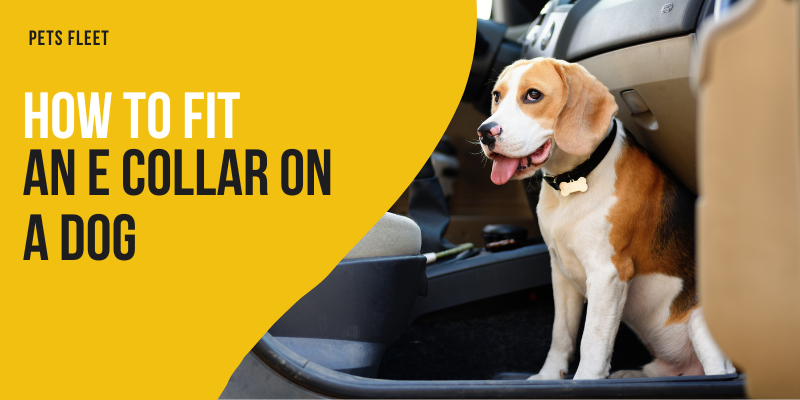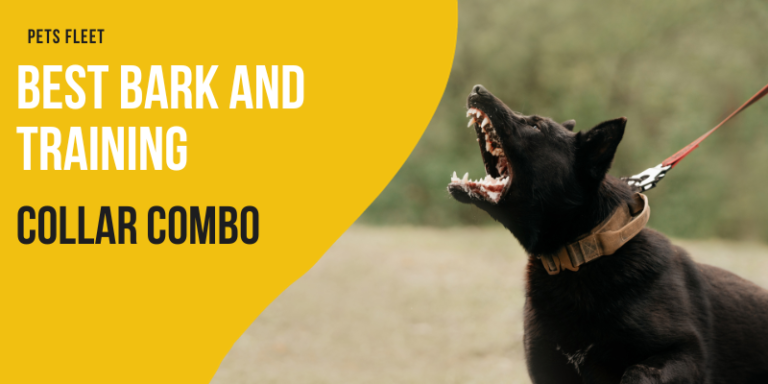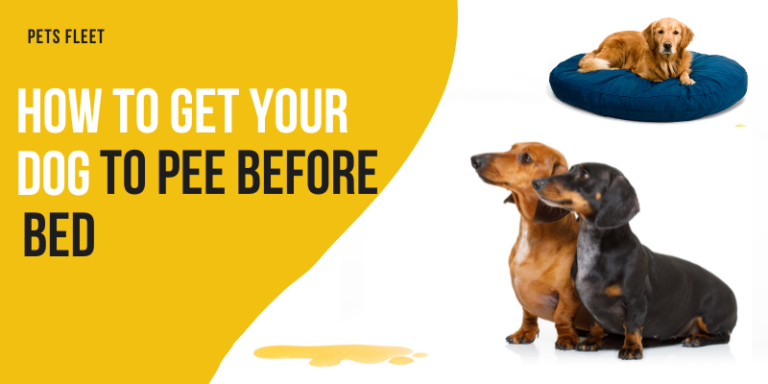How To Fit An E Collar On A Dog – Foolproof Method

Are you ready to ensure a comfortable and secure fit for your furry friend’s e-collar? Learning how to fit an e-collar on a dog is a valuable skill that can provide peace of mind and promote their well-being.
To fit an e-collar on a dog, gently place it around their neck, ensuring a snug but comfortable fit. Use the adjustable straps to secure it in place, allowing enough space for two fingers to fit between the collar and the dog’s neck.
In this comprehensive guide, we’ll walk you through everything you need to know about fitting an e-collar on your dog like a pro! From choosing the right collar to monitoring and adjusting, we’ve got you covered. So grab your pup and let’s dive into this step-by-step tutorial that will have tails wagging with joy!
Choosing The Right E-Collar
When it comes to choosing the right e-collar for your dog, there are a few important factors to consider.
Size Matters
Ensure the e-collar fits your dog’s neck properly by measuring their neck circumference beforehand.
Choose The Right Type
Consider your training goals and select an e-collar that aligns with your needs, such as static correction, vibration, or sound-only collars.
Quality Counts
Opt for a durable and reliable e-collar from reputable brands to ensure it can withstand regular use without breaking or malfunctioning.
Comfort Is Key
Prioritize your dog’s comfort by selecting an e-collar that fits well and doesn’t cause any discomfort or irritation during training sessions.
By taking these factors into consideration when choosing an e-collar for your dog, you can ensure that you find one that meets both their needs and yours in terms of effectiveness and comfortability.
How To Fit An E Collar On A Dog – Comprehensive Guide
Fitting an E-collar on your dog requires a careful and gentle approach to ensure their comfort and safety. Follow these step-by-step instructions to properly fit an E-collar:
1- Find A Calm And Quiet Area
Choose a space where you can work with your dog without distractions or disturbances.
2- Approach With A Soothing Tone
Speak to your dog in a calm and reassuring voice to help them relax. Offer treats or their favorite toy to create positive associations with the collar.
3- Introduce The Collar Gradually
Allow your dog to sniff and investigate the collar before attempting to put it on. This will help them become familiar with the object and reduce any anxiety.
4- Positioning
Place the collar around your dog’s neck with caution. The flat part should rest against their chest while leaving enough space for them to breathe comfortably. Ensure that there is no excessive pressure on their neck or any discomfort caused by tightness.
5- Monitor For Comfort And Adjust If Necessary
Watch for any signs of discomfort or resistance from your dog. If the collar seems to be causing them distress, take a step back and give them more time to adjust. Make any necessary adjustments to ensure a proper fit.
6- Double Check Fitting
After securing adjustments, double-check everything one last time to make sure it fits well and doesn’t cause any restrictions in movement or breathing for your pup.
7- Patience And Positive Reinforcement
Be patient throughout the process and offer plenty of praise, treats, or rewards to encourage your dog. This will help them associate the collar with positive experiences.
Remember, each dog is unique, so the fitting process may vary. It’s important to approach fitting the E-collar with patience, understanding, and a focus on your dog’s well-being.
Tips For Getting Your Dog Used To The E Collar
Introducing your dog to an e collar can be a little challenging, but with some patience and positive reinforcement, you can help them adjust comfortably. Here are a few tips to get your furry friend used to wearing their new accessory.
- Start by letting your dog explore the e collar on their own terms. Allow them to sniff it and investigate it without any pressure or expectations. This will help them feel more comfortable around the device before actually putting it on.
- Gradually introduce the e-collar by placing it loosely around your dog’s neck for short periods, increasing the duration over time. Use treats and praise to create positive associations.
- It’s important not to rush this process – every dog is different and may require varying amounts of time to adapt. Be patient and understanding if your pup seems hesitant or anxious at first.
- Make wearing the e-collar a positive experience by engaging your dog in fun activities, such as playing games, going for walks, or providing special toys. This helps distract their attention and creates positive associations with the collar.
- Remember that consistency is key when getting your dog used to an e collar. Make sure you use clear commands when training so they understand what is expected of them while wearing the device.
By following these tips with patience and positivity, you can help your furry friend adjust comfortably to their new e collar in no time!
Signs Of Uncomfortable Fitting
When fitting an e-collar on your dog, it’s crucial to ensure that it is comfortable and properly adjusted. A poorly fitted collar can cause discomfort and distress for your furry friend. Here are some signs that indicate your dog may be experiencing uncomfortable fitting with the e-collar.
- Pay attention to any excessive scratching or pawing at the collar. If you notice your dog constantly trying to remove or adjust the collar, it could be a sign that it is causing irritation or discomfort.
- Watch out for redness or chafing around the neck area where the collar sits. These are clear indicators that the fit needs adjustment.
- Another sign of uncomfortable fitting is if your dog becomes unusually anxious or restless when wearing the e-collar. They might display behaviors such as pacing, whining, or avoiding activities they normally enjoy.
- Keep an eye out for changes in appetite and water intake. If your dog suddenly starts eating less or drinking more than usual while wearing the e-collar, this could suggest discomfort caused by improper fit.
- Lastly but importantly, observe any reluctance from your dog to move freely while wearing their e-collar. They may exhibit stiffness in their movements or appear hesitant to engage in normal playfulness.
It’s essential to regularly check and adjust the fit of their e-collar as needed to ensure they remain comfortable throughout their healing process.
Considerations For Fitting An E-Collar On Different Dogs
Size Matters: Take your dog’s size into account when selecting an e-collar. Choose a size that fits well and provides comfort, whether your dog is big or small.
Temperament Counts
If your dog is sensitive or fearful, opt for an e-collar with soft padding or covers to minimize any discomfort and promote a positive experience.
Purposeful Selection
Determine the specific issue or behavior you are addressing with the e-collar, and choose a collar designed for that purpose, be it training, containment, or medical recovery.
Watch Their Reaction: Observe how your dog reacts to wearing the e-collar during initial fittings. Some dogs adapt quickly, while others may need more time and patience. Make adjustments as needed to ensure their comfort.
Individualized Approach
Remember that every dog is unique, so tailor your fitting approach to their needs. By considering size, temperament, purpose, and individual reactions, you can ensure a comfortable and secure fit for your furry friend.
Troubleshooting Common Issues With Fitting An E-Collar
Fitting an e-collar on a dog can sometimes come with its fair share of challenges. Here are some common issues that dog owners may encounter when fitting an e-collar and how to troubleshoot them.
1- Size Mismatch
If the e-collar is too big or too small for your dog, it may not fit properly and could be uncomfortable for them. Ensure you measure your dog’s neck correctly before purchasing an e-collar to avoid this issue.
2- Rubbing Or Chafing
Some dogs may experience rubbing or chafing from wearing the e-collar, particularly if they have sensitive skin. To prevent this, check regularly for any signs of irritation and adjust the fit accordingly. You can also try placing a soft fabric barrier between the collar and your dog’s neck.
3- Difficulty Eating Or Drinking
In some cases, dogs may struggle to eat or drink while wearing an e-collar due to its size or shape obstructing their access to food and water bowls. Consider using shallow bowls or elevated feeders to make mealtimes easier for your furry friend.
4- Anxiety Or Stress
Dogs who are not used to wearing an e-collar might feel anxious or stressed when first introduced to it. Gradually acclimate your dog by allowing them short periods of time in the collar initially, gradually increasing the duration as they become more comfortable.
5- Incorrect Placement
Make sure you position the collar at the correct height on your dog’s neck – just below their ears – without applying excessive pressure that could cause discomfort.
By addressing these common issues proactively and troubleshooting accordingly, you can ensure that fitting an e-collar on your furry companion is a positive experience for both of you!
Conclusion
Fitting an e-collar on a dog requires careful consideration of their size, temperament, and specific needs.
By choosing the right size and design, taking their comfort into account, and observing their reactions, you can ensure a successful and positive experience. Remember, each dog is unique, so be patient and adaptable throughout the process.
With the right approach, you can fit an e-collar on your dog effectively and help address behavioral or medical concerns while keeping them comfortable and secure.






